Last updated on April 15th, 2024 at 01:05 pm
Pothos plants are excellent additions to any indoor space due to their captivating beauty and easy maintenance. Notably, their remarkable ability to be effortlessly propagated, even during the winter months, adds to their appeal.
Worried that cold weather may hinder your desire to expand your indoor plant collection through Pothos propagation this winter? Worry not! Pothos, known for their resilience and adaptability, can be successfully propagated via soil propagation, even in colder temperatures.
This guide serves as your comprehensive tool, providing invaluable advice and practical tips to ensure successful rooting and growth of your Pothos cuttings, even in cooler weather conditions. Curious about how easy it is to propagate Pothos in winter? Join us as we delve into the details!
Pothos, scientifically known as Epipremnum aureum, is a popular and low-maintenance houseplant appreciated for its lush, trailing vines and vibrant, heart-shaped leaves. This plant, native to the Solomon Islands, is highly adaptable and thrives in various light conditions, making it an ideal choice for indoor spaces.
Pothos is celebrated for its air-purifying properties and is often favored by both beginner and experienced plant enthusiasts due to its resilience and ease of care. Each pothos stem contains nodes—small, distinct points along its length. These nodes are small, protruding areas where roots and leaves emerge.
During pothos propagation, these nodes are pivotal as they serve as sites for root growth, allowing the plant to establish itself and sustain its growth cycle. They act as the initial point for new roots, enabling the plant to propagate and flourish.
Contents
- 1 Key Considerations for Propagate Pothos In Winter
- 2 Challenges To Propagate Pothos In Winter
- 3 Soil Propagation To Propagate Pothos in Winter
- 4 To Overcome Challenges While Propagate Pothos In Winter
- 5 FAQS
- 5.1 Is it possible to propagate Pothos in winter?
- 5.2 What is soil propagation, and why is it recommended to propagate pothos in winter?
- 5.3 How can I ensure successful Pothos propagation during winter?
- 5.4 What are the key considerations to propagate pothos in winter?
- 5.5 How long does it take for Pothos cuttings to root during winter propagation?
- 5.6 What challenges might I face when propagating Pothos in winter, and how can I overcome them?
- 6 Winter Propagation of Pothos
- 7 Author
Key Considerations for Propagate Pothos In Winter
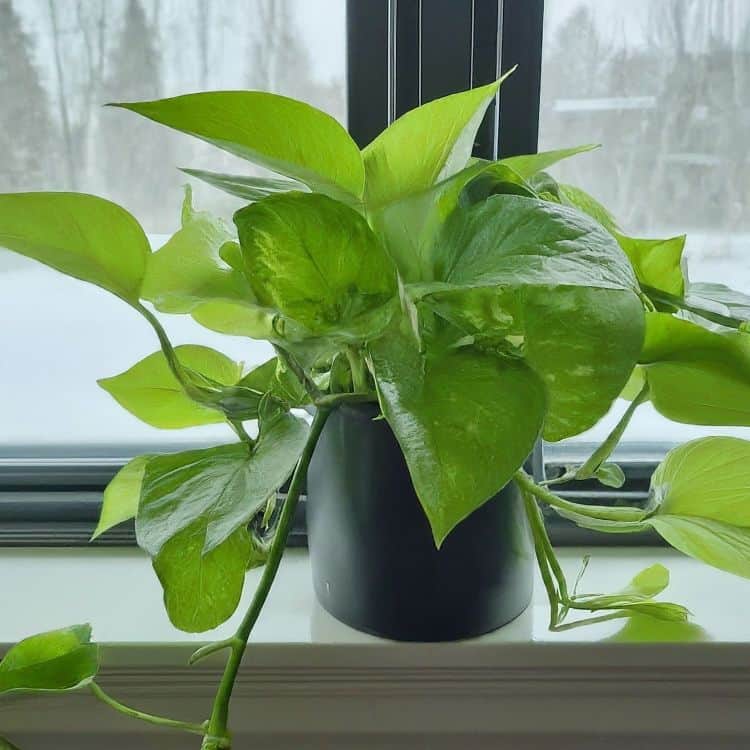
Successful Soil Propagation
Pothos plants can be propagated in soil during winter with proper preparation and care.
Environmental Factors
To ensure successful propagation during winter, it’s crucial to enhance lighting, maintain temperatures above 65°F, and increase humidity levels.
Techniques for Ideal Conditions
Employ methods like artificial lighting setups to supplement natural light, utilize heat mass or insulation to regulate temperatures, and consider using misting or humidifiers to create a favorable environment for the growth of propagated Pothos plants during the colder months.
Challenges To Propagate Pothos In Winter
To propagate pothos in winter can present a few challenges due to the colder temperatures and reduced sunlight. Here are some common challenges:
Low Light Levels
Winter often brings reduced natural light indoors, which can hinder the growth of propagated Pothos cuttings. Insufficient light might slow down the root development process.
Cooler Temperatures
Pothos plants prefer warmer temperatures for optimal growth, typically above 65°F (18°C). In winter, maintaining these temperatures can be challenging, especially in colder regions, and may slow down root development.
Dry Indoor Air
Heating systems used during winter can lead to dry indoor air, which might affect the humidity levels around the Pothos cuttings. Insufficient humidity could impede root growth.
Slower Growth Rate
The combination of lower temperatures, reduced light, and potentially drier air can collectively lead to slower growth rates for the propagated Pothos plants during winter.
Soil Propagation To Propagate Pothos in Winter
Soil propagation stands out as a successful way to multiply plants, especially when trying to propagate pothos in winter. This method revolves around planting stem cuttings directly in soil or water, as opposed to using different mediums. While it might take a bit more time for the roots to develop through soil propagation, once the roots are established, the plants tend to grow faster.
Achieving success in this technique demands careful preparation and attentive care. Here’s a simple step-by-step guide to help you propagate Pothos in winter
Gather Your Tools and Materials

You won’t need many things for this process. Grab a pair of clean scissors or pruning shears, some small pots or containers, and fresh potting soil.
Select Healthy Vines for Cutting
Look for a healthy Pothos plant. Identify a vine with a few leaves and nodes (those little bumps on the stem) – these are crucial for new root growth.
Take Cuttings
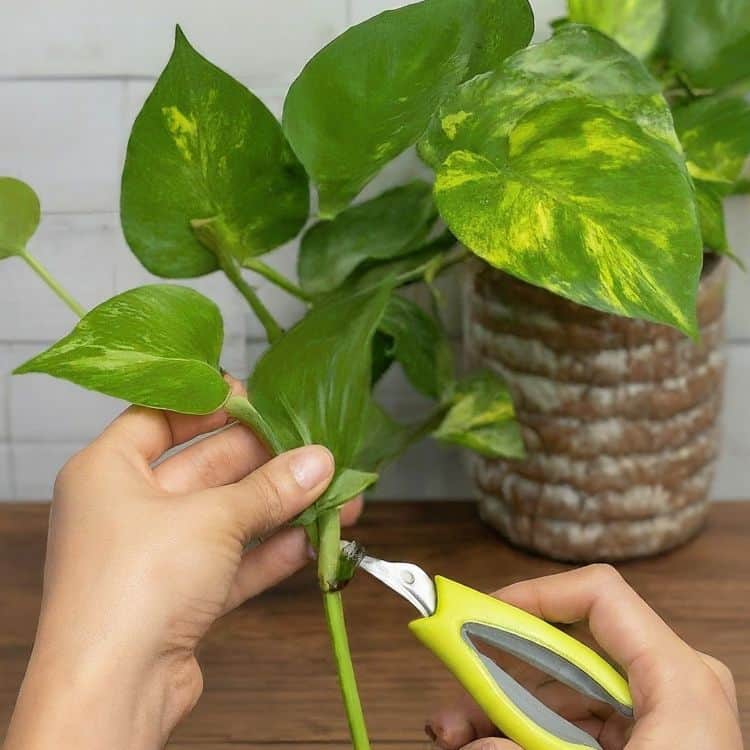
Using your scissors or shears, snip off a few vine cuttings around 4-6 inches long. Make sure each cutting has at least 2-3 leaves and a couple of nodes.
Prepare Cuttings for Planting
Remove the lower leaves of each cutting, leaving only the top ones. This prevents rotting when you put them in water or soil.
Apply Root Hormone
To further encourage root growth, consider applying a rooting hormone to the cut ends of the vine cuttings after you’ve removed the lower leaves. Rooting hormone can stimulate root development and increase the chances of successful propagation.
Soil Propagation

In soil propagation, place the cuttings directly into pots filled with fresh potting soil. Water the soil lightly and cover the pots with plastic to create a mini greenhouse effect. This helps to maintain moisture levels.
Provide Ideal Conditions
Place your cuttings in a spot with indirect sunlight. Avoid direct sunlight as it can harm the delicate cuttings. Ensure the temperature remains above 65°F (18°C).
To Overcome Challenges While Propagate Pothos In Winter
Achieving successful propagation of Pothos in winter requires careful attention to detail and proactive measures. While the process may present challenges due to colder temperatures and reduced sunlight, implementing certain strategies can significantly increase your chances of success.
Choosing the Right Propagation Method
While soil propagation is a popular method for propagating Pothos in winter, don’t hesitate to explore other techniques such as water propagation or using rooting hormone. Experimenting with different methods can help you find the approach that works best for your specific environment and conditions.
Supplemental Lighting
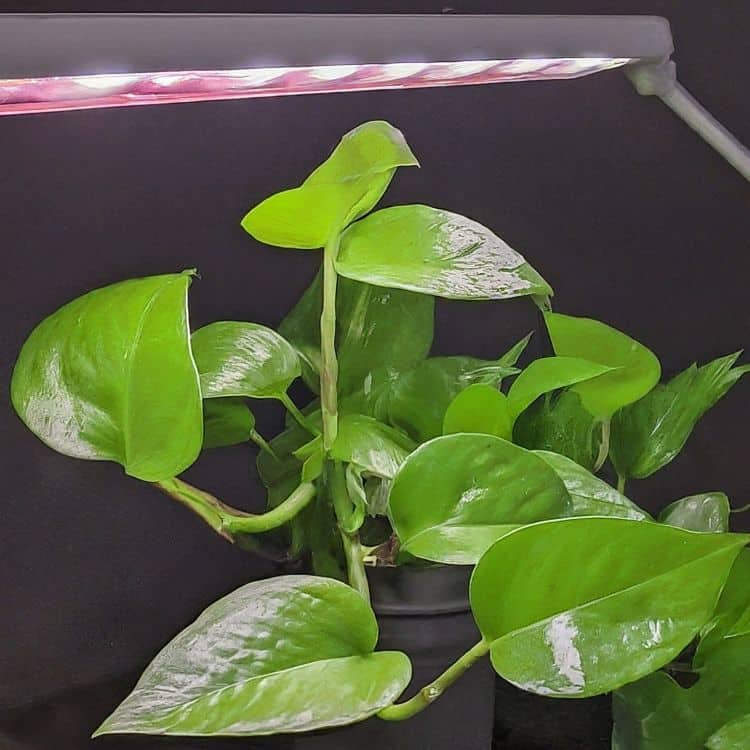
During the darker winter months, natural sunlight might be insufficient for Pothos cuttings. To compensate, utilize grow lights or artificial lighting sources. Position these lights close to the cuttings to ensure they receive adequate light, typically for 10-12 hours a day. This additional light helps in photosynthesis and promotes healthy growth.
Maintain Ideal Temperatures
Pothos plants thrive in temperatures above 65°F (18°C). To ensure optimal root growth during winter, maintain a slightly warmer environment around the cuttings. Consider using heating mats placed beneath the pots or insulating materials around the area to help maintain suitable temperatures. Avoid exposing the cuttings to cold drafts or extreme temperature fluctuations.
Increase Humidity
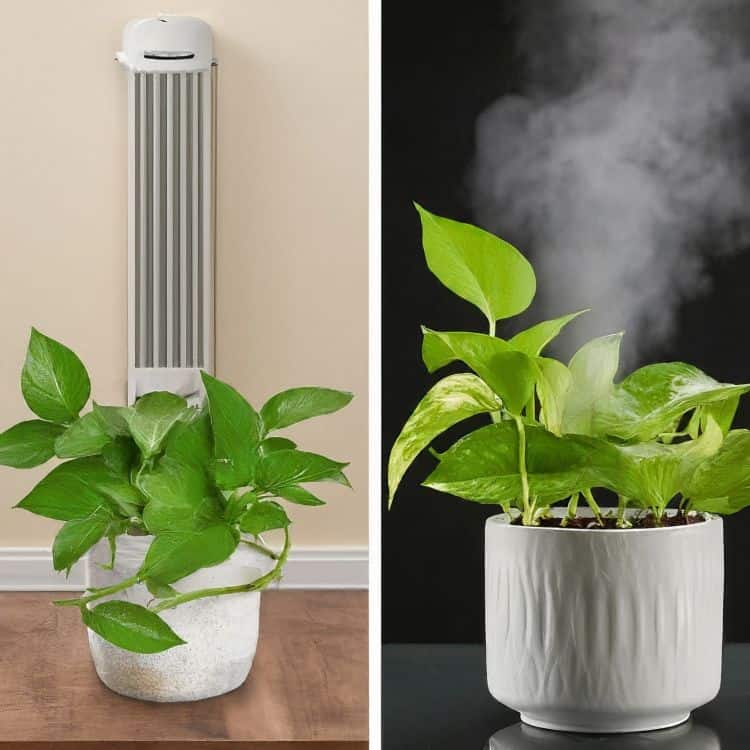
Indoor heating during winter often results in drier air, which can hinder root development. To counter this, increase humidity levels around the Pothos cuttings. You can use a humidifier in the propagation area or opt for regular misting to create a moist environment. A humidity level of around 60-70% is beneficial for root development.
FAQS
Is it possible to propagate Pothos in winter?
Yes, Pothos can be successfully propagated during winter using soil propagation methods. Despite the challenges of colder temperatures and reduced light, with proper care and techniques, Pothos cuttings can still root and grow.
What is soil propagation, and why is it recommended to propagate pothos in winter?
Soil propagation involves planting Pothos stem cuttings directly in soil or water instead of using other mediums. It is recommended for winter propagation as it provides a stable environment for root development, though it may take a bit longer for the roots to establish compared to other methods.
How can I ensure successful Pothos propagation during winter?
To ensure successful propagation during winter, it’s essential to address challenges such as low light levels and cooler temperatures. Using supplemental lighting, maintaining ideal temperatures above 65°F, and increasing humidity levels can create a favorable environment for root growth.
What are the key considerations to propagate pothos in winter?
Key considerations for winter Pothos propagation include providing supplemental lighting, maintaining ideal temperatures, and increasing humidity levels. These factors are crucial to support root development and ensure successful propagation despite the challenges of winter conditions.
How long does it take for Pothos cuttings to root during winter propagation?
During winter, Pothos cuttings may take longer to root due to slower growth rates caused by reduced light and lower temperatures. Patience is key, and it might take several weeks for the roots to establish before seeing significant growth.
What challenges might I face when propagating Pothos in winter, and how can I overcome them?
Challenges during winter propagation include low light levels, cooler temperatures, and dry indoor air. Overcoming these challenges involves using supplemental lighting, maintaining warmer temperatures, and increasing humidity around the Pothos cuttings to create an environment conducive to root growth.
Winter Propagation of Pothos
To propagate pothos in winter is indeed possible and rewarding with the right techniques and care. Pothos, with their adaptability and resilience, offer an excellent opportunity for indoor plant enthusiasts to expand their collections even in colder seasons. Soil propagation emerges as a successful method for rooting Pothos cuttings during winter, despite challenges like reduced light, cooler temperatures, and dry indoor air.
Key considerations such as providing supplemental lighting, maintaining ideal temperatures above 65°F, and increasing humidity levels play crucial roles in supporting root development and ensuring successful propagation. Overcoming challenges through proper preparation, patience, and diligent care can lead to the growth and flourishing of new Pothos plants, adding greenery and charm to indoor spaces.
Remember, while winter propagation might take longer due to slower growth rates, the satisfaction of seeing new roots and growth is worth the effort. By following the tips, techniques, and solutions outlined in this guide, enthusiasts can confidently embark on their journey to propagate Pothos, even during the chillier winter months.

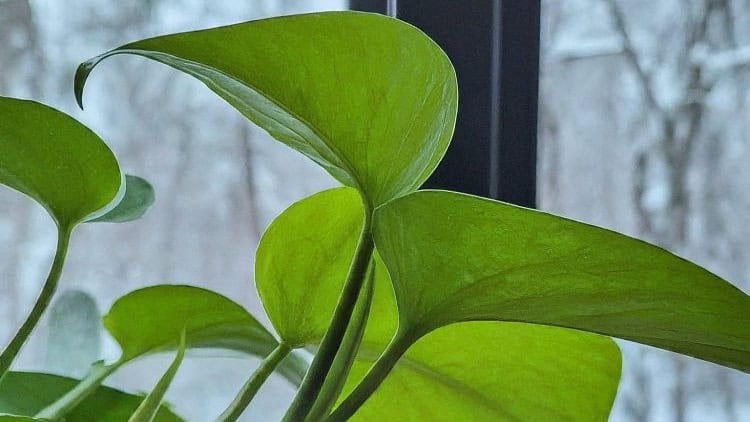
4 thoughts on “Successfully Propagate Pothos in Winter”